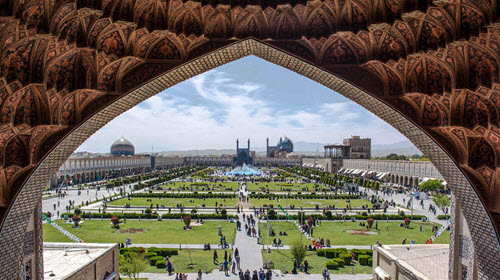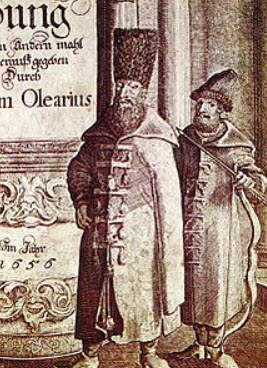Contents
Early 17th century: Benedict Goës
In the late 16th, Benedict Goës, a Portuguese Jesuit Benedict, joined a mission to the Mughal Emperor Akbar. Eventually, he was elected by the Jesuit leadership to go on a journey to China, via Kashgar. One of the reasons for choosing Goës was the fact that he spoke Persian.
Goës embarked on the journey overland in the early 17th century, heading northwest into Afghanistan and then north through Hindu Kush. After reaching the headwaters of the Amu Darya, he followed a route east to Sarikol, before going through places such as Yarkand and Kashgar. He travelled along the outskirts of the Taklamakan Desert region, but died before reaching Beijing.
1615-1616: John Crowther and Richard Steele
 John Crowther and Richard Steele were both agents for the British East India Company. In 1615, they were already in northern Indian, when they embarked on a journey from Agra, the Mughal capital, to Isfahan, the Safavid capital.
John Crowther and Richard Steele were both agents for the British East India Company. In 1615, they were already in northern Indian, when they embarked on a journey from Agra, the Mughal capital, to Isfahan, the Safavid capital.
They travelled overland via Kandahar, and their notes from the journey show how relatively safe the land route was considered as long as you were within lands controlled by Mughals and Safavids. This helped keep the Silk Road active even during the famous Age of Sail. By taking the Silk Road, these Englishmen could also avoid using any of the many Indian Ocean seaports that were under Portuguese control.
After leaving Isfahan, Crowther returned to India, while Steele travelled overland all the way to the Mediterranean. Only between Marseilles and England did he go by boat.
Six journeys between 1629 and 1675: Jean Baptiste Tavernier
Jean Baptiste Tavernier was a French merchant and jeweler who made six major voyages through Persia in the 17th century. Examples of places that he visited are the Ottoman Empire, Safavid Persia and Mughal India. He developed good connections with various Asian merchant communities, such as the Armenian merchants doing business in Persia.
Three journeyes between 1633 and 1643: Adam Olearius

Adam Olearius was a Protestant Christian educated at the University of Leipzig.
First journey: 1633-1635. As secretary to the Embassy of Holstein, Adam Olearius travelled to Moscow.
Second journey: 1635-1639. As secretary to the Embassy of Holstein, Olearius travelled through Moscovy to Persia. He spent a year in Persia.
Third journey: 1643. Olerarius returned to Moscow as the Ambassador of Holstein.
- Olearius left detailed accounts of both Muscovy and Persia. First published in 1647, a revised German edition was launched in 1656, followed by various translations.
Two journeys between 1664 and 1677: John Chardin
Jean-Baptiste Chardin, known in English as John Chardin, was a French Hugenot jeweller who travelled to the Caucasus, Persia and India. His first longer sejour to the East was in 1664-1667, his second lasted from 1671 to 1677. He spoke Persian and wrote one of the most notable European accounts of Safavid Persia.
In England, he was an expert on the Middle East. He could not live in France due to the persecution of Protestants there.
1682-1693: Hovhannes Joughayetsi
This Armenian merchant travelled from New Julfa to Northern India and Tibet. (New Julfa was an Armenian suburb of the city Isfahan in today’s Iran.) He spent five years in Lhasa, the administrative and religious capital of Tibet.
His writings include a lot of information about the well-developed Armenian trading network of this era, including trading routes that went through the Safavid and Mughal empires.